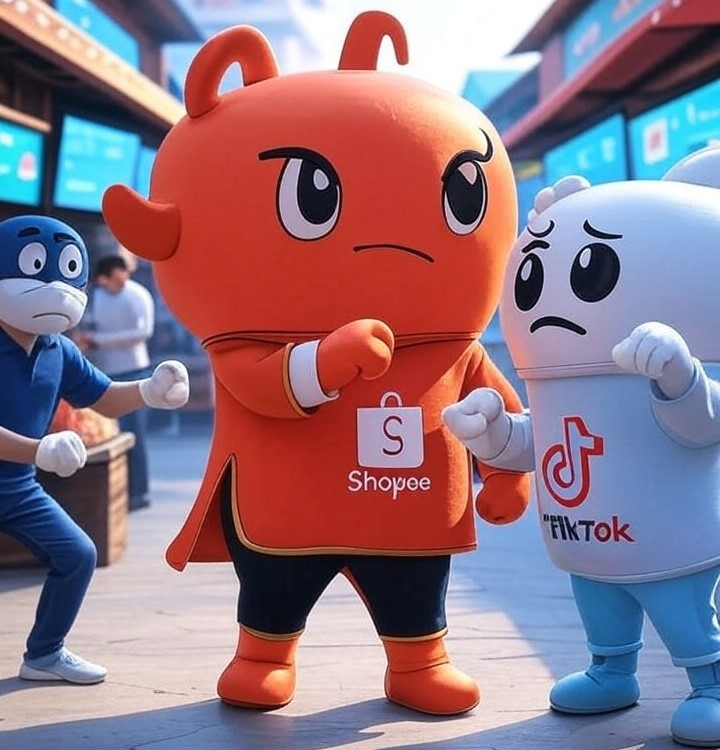Shopee Vietnam’s increasing fees and tightening policies are reshaping the e-commerce landscape, driving a widening gap between small and medium-sized enterprises (SMEs) and larger, more established brands. As operational costs rise, fulfillment centers like SwiftHub report a sharp decline in order volumes from smaller sellers, while brands with direct access to manufacturers continue to thrive.
SME Sellers Face Mounting Pressures
Since mid-2024, Shopee has implemented a series of changes that have put significant strain on small sellers. According to Tech in Asia, the platform now deducts up to 25% from each sale, including logistics, marketing, and a new flat fee of 3,000 VND (US$0.11) per transaction—an especially painful cut for low-priced products. To stay afloat, many merchants are forced to bundle products, raise prices, or reduce marketing budgets.
“These fees are crushing our margins,” said Rezky, an e-commerce specialist at a Vietnamese FMCG brand. “We’ve seen our profits drop by 3–5% and had to cut back on promotions just to survive.”
Compounding the challenge are operational requirements that favor larger players, such as same-day shipping for morning orders and a buyer-friendly return policy that allows returns simply due to a change of mind. While Shopee recently narrowed the return window, sellers say abuse of the policy still eats into profits.
The impact has been severe. In 2024 alone, over 88,000 Vietnamese sellers closed their Shopee stores. According to Asia News Network, the number of active sellers continued to fall in 2025, with a net loss of 80,000 shops in the first half of the year—most of them SMEs.
Bigger Brands Hold Steady
In contrast, SwiftHub notes that sellers with direct ties to manufacturers—often larger, verified brands—are not only withstanding Shopee’s policy shifts but are seeing stable or even growing sales. These sellers benefit from bulk purchasing, streamlined supply chains, and better control over logistics and inventory.
Metric data supports this: official brand stores on Shopee Mall accounted for 60% of the platform’s gross merchandise value (GMV) in May 2023 and posted a 63.3% growth surge in 2025. K-beauty brands like COSRX and 3CE, for example, have used Shopee’s tools and promotional features to grow orders 5.2 times from 2021 to 2023.
This shift aligns with Shopee’s broader strategic direction. The platform increasingly favors verified, high-margin sellers, and its third-party fulfillment service—launched in 2024—further reduces the operational burden for large brands.
Shopee’s Seller Strategy Under Scrutiny
Some industry observers believe Shopee may be deliberately filtering out underperforming sellers. Metric reports a nearly 20% drop in online shops across Vietnam’s major platforms in Q3 2024, while buyers are gravitating toward verified stores. Shopee’s profitability goals—evidenced by a 38% revenue jump and its first full-year positive adjusted EBITDA in 2024—suggest a tightening focus on higher-margin operations.
“Shopee is positioning itself for the long term with larger brands that can afford the costs and deliver consistent service,” said Quan Nguyen, ecom fulfillment manager. Regulatory pressures, such as stricter tax collection rules, are also driving platforms to favor sellers with transparent, registered operations.
According to Vietnam News, over 300,000 sellers on Shopee and other platforms still lack formal business identification, contributing to an estimated 70 trillion VND in untaxed revenue—a likely target for future government crackdowns.
SMEs Seek Alternatives
Amid rising challenges, SMEs are turning to alternative strategies. Many are exploring more flexible platforms like Zalo and Facebook, where Vietnamese e-commerce still thrives, or testing livestream selling on TikTok. Others are experimenting with direct-to-consumer (DTC) websites to regain margin control, although scaling such efforts without Shopee’s vast reach remains difficult.
Campaign participation is also crucial. Events like 11.11 and 12.12, which include subsidized shipping for orders above 150,000 VND, can still drive meaningful sales if sellers can manage tight margins.
Shopee’s Balancing Act
Shopee remains Vietnam’s dominant e-commerce platform, holding nearly 70% market share as of Q3 2023. In 2025, its sales are projected to reach 122.8 trillion VND, fueled by aggressive buyer incentives and a stronger lineup of verified sellers. But its growing emphasis on high-performance merchants comes at the cost of alienating the SME community that once formed the backbone of Vietnam’s digital retail boom.
As TikTok Shop gains momentum—posting 107.3% GMV growth in 2025—Shopee faces pressure to balance profitability with seller diversity. For SMEs, the message is clear: evolve or risk obsolescence.

